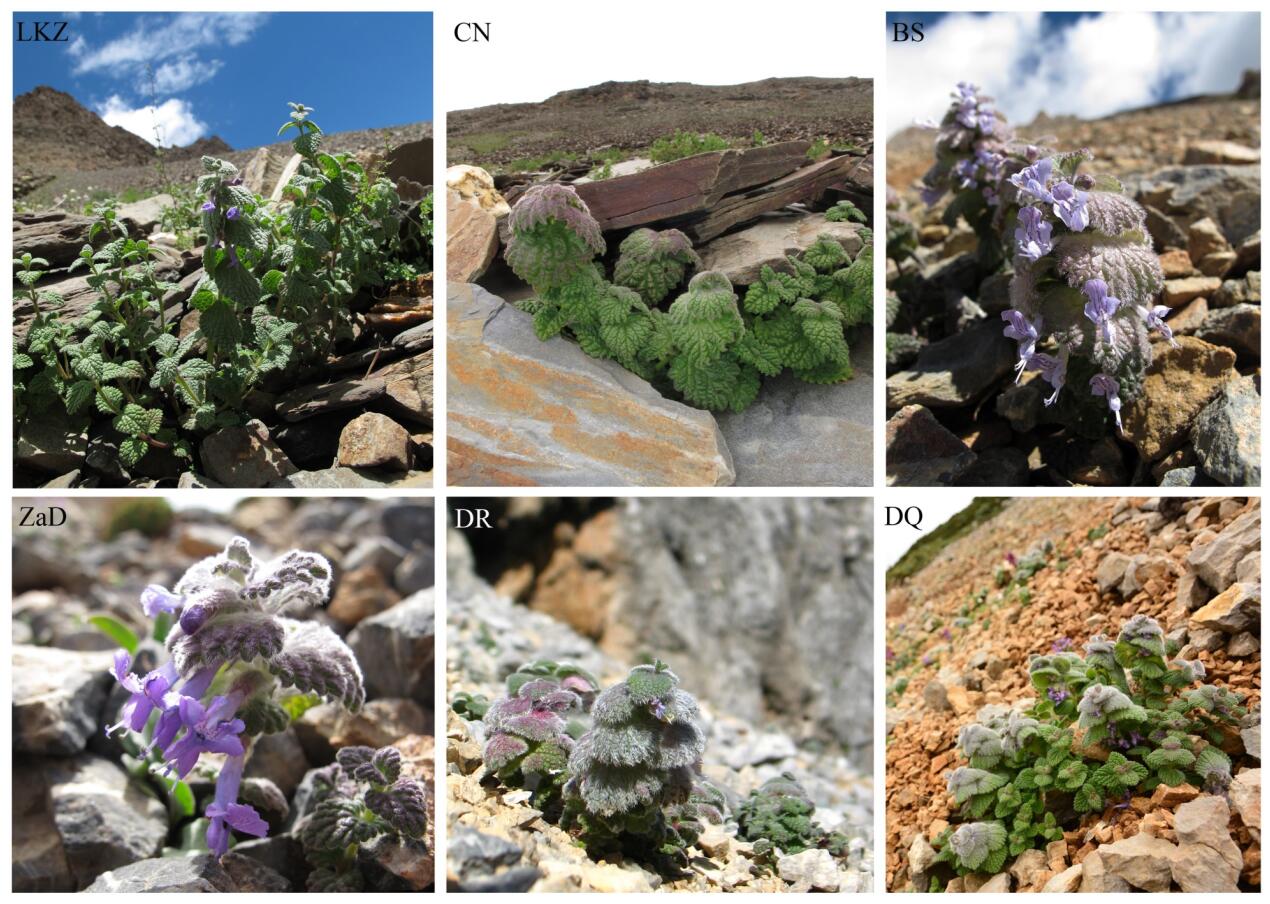The Ward Line–Mekong-Salween Divide (MSD) is a classic geographical barrier forwardeby Francis Kingdon-Ward in 1921. In recent years, several studies have suggested that the MSD was the main driver leading to the contemporary diversity and population differentiation of vertebrates and plants, such as Sinopodophyllum hexandrum and Taxus wallichiana located in forests or alpine meadows.
To reveal the role of the MSD in shaping the population structure of plant species that restricted in the subnival belt of the (Himalayas Hengduan Mountains) HHM region, Prof. SUN Hang ’s group from Kunming Institute of Botany, Chinese Academy of Sciences (KIB/CAS) reconstruct the phylogeography of Marmoritis complanatum combined with climatic data analysis and species distribumodelling (SDM) endemic to the subnival belt of the HHM region.
The phylogeographic differentiation of M. complanlatum was identified between two geographic regions [central-eastern Himalaya (CEH) vs. Hengduan Mountains (HM)] across the MSD, and the differentiation of two lineages began in the early Pliocene (4.49 Ma), coinciding with the formation of the MSD. Climatic data analysis suggests a moister environment for M. complanatum the HM region than that in the CEH region. These results indicated the MSD was the main driver of the phylogeographic differentiation for M. complanatum.
High genetic diversity and inter-population differentiation were detected in M. complanatum based on the cpDNA and nrDNA data, exhibiting an island-like population structure, which has also been detected in other subnival species, such as the perennial herbs Eriophyton wallichii, Thalictrum squamiferum and Chionocharis hookeri in the HHM region.
Mismatch distribution analyses and species distribution modelling indicated that the species’ broad-scale distributions remained relatively stable with signs of a little shrinkage of populations after the Last Glacial Maximum, suggesting Quaternary glaciations had little impact on the large-scale distributional range shift of M. complanatum.
This study is the first evidence for the effects of the MSD on the phylogeographic structure of the subnival plant species, and verifies the importance of the floristic boundary represented by the MSD.
Results published in Botanical Journal of the Linnean Society etilted “The ‘Ward Line–Mekong–Salween Divide’ is an important floristic boundary between the eastern Himalaya and Hengduan Mountains: evidence from the phylogeographical structure of subnival herbs Marmoritis complanatum (Lamiaceae)”. (https://doi.org/10.1093/botlinnean/box067)
This research was supported by the National Key R&D Program of China (2017YFC0505200 to H. S.), the Major Program of National Natural Science Foundation of China (31590820 and 31590823) and the National Natural Science Foundation of China (31600170, 31460047, 31670206).

Marmoritis complanatum from different populations (Image by KIB)
Contact:
General Office
Kunming Institute of Botany, CAS
YANG Mei
email: yangmei@mail.kib.ac.cn
(Editor:YANG Mei)




